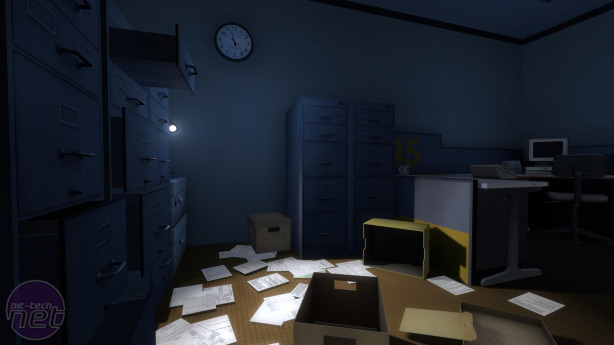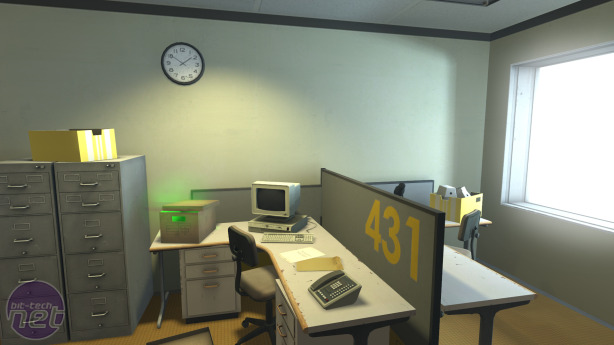
Obviously some paths are better than others, but that’s less a criticism of the weaker few and more a testament to how good some of the best end up being. It’s impossible to talk any further without a spoiler, really, but there are a few genuine shocks that feel as if they might have been a nightmare to make a reality and definitely need to be seen.
Interestingly, the demo for The Stanley Parable released a week prior serves as a standalone appetizer for the main game. It’s absolutely an unmissable, perhaps essential, part of the experience.
The demo contains no content from the full game, save for some recycled art. Otherwise the level design, narration, story and actions within serve as an introduction to the kinds of themes and gameplay ideas that the main game utilises.
In a lot of ways it’s actually better than the real thing.
The Stanley Parable itself serves as a great experiment and thought piece, the Demonstration is less extensive (with no branching paths), but is far funnier. It has quite a bit to say about player involvement, specifically about the denial of expectation, preventing your input from having the kind of effect that you’d intended. It’s, again, hard to say too much without ruining the point.
The full game is about the illusion of real choice. The demo is too, but in a different, perhaps more clever way. It gives you one option, one path, you can diverge as you see fit but you’ll only travel in one direction. You’ll decide on what you’ll prefer to do, but it won’t matter, the story is only built to serve one purpose.
If you purchase The Stanley Parable, which you should because it’s very clever, you’re missing the best experience in the entire game if you don’t also choose to download something which is not actually in the game at all. That may sound a bit odd, but if that’s too odd, I don’t think this is your type of game anyway.
Interestingly, the demo for The Stanley Parable released a week prior serves as a standalone appetizer for the main game. It’s absolutely an unmissable, perhaps essential, part of the experience.
The demo contains no content from the full game, save for some recycled art. Otherwise the level design, narration, story and actions within serve as an introduction to the kinds of themes and gameplay ideas that the main game utilises.
In a lot of ways it’s actually better than the real thing.
The Stanley Parable itself serves as a great experiment and thought piece, the Demonstration is less extensive (with no branching paths), but is far funnier. It has quite a bit to say about player involvement, specifically about the denial of expectation, preventing your input from having the kind of effect that you’d intended. It’s, again, hard to say too much without ruining the point.
The full game is about the illusion of real choice. The demo is too, but in a different, perhaps more clever way. It gives you one option, one path, you can diverge as you see fit but you’ll only travel in one direction. You’ll decide on what you’ll prefer to do, but it won’t matter, the story is only built to serve one purpose.
If you purchase The Stanley Parable, which you should because it’s very clever, you’re missing the best experience in the entire game if you don’t also choose to download something which is not actually in the game at all. That may sound a bit odd, but if that’s too odd, I don’t think this is your type of game anyway.
-
Overall80 / 100


MSI MPG Velox 100R Chassis Review
October 14 2021 | 15:04












Want to comment? Please log in.